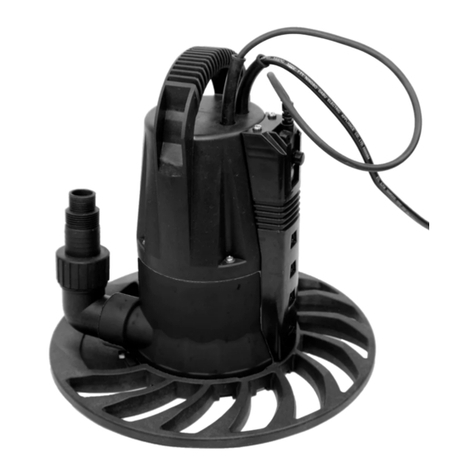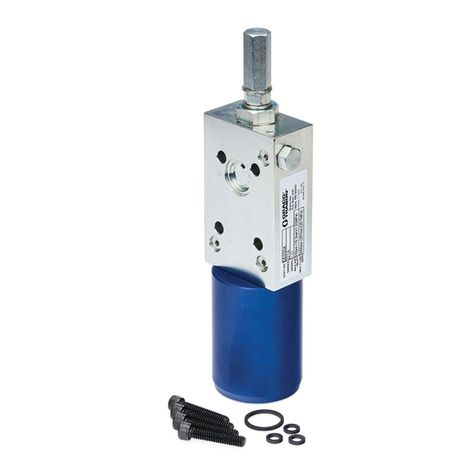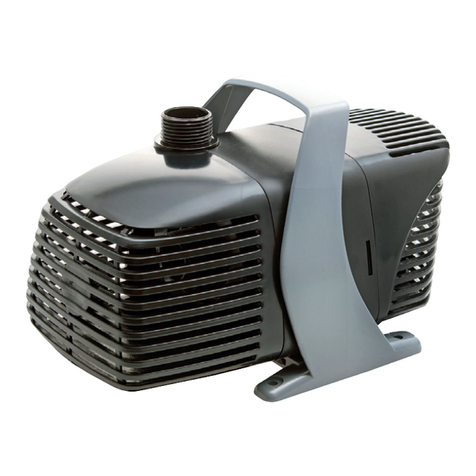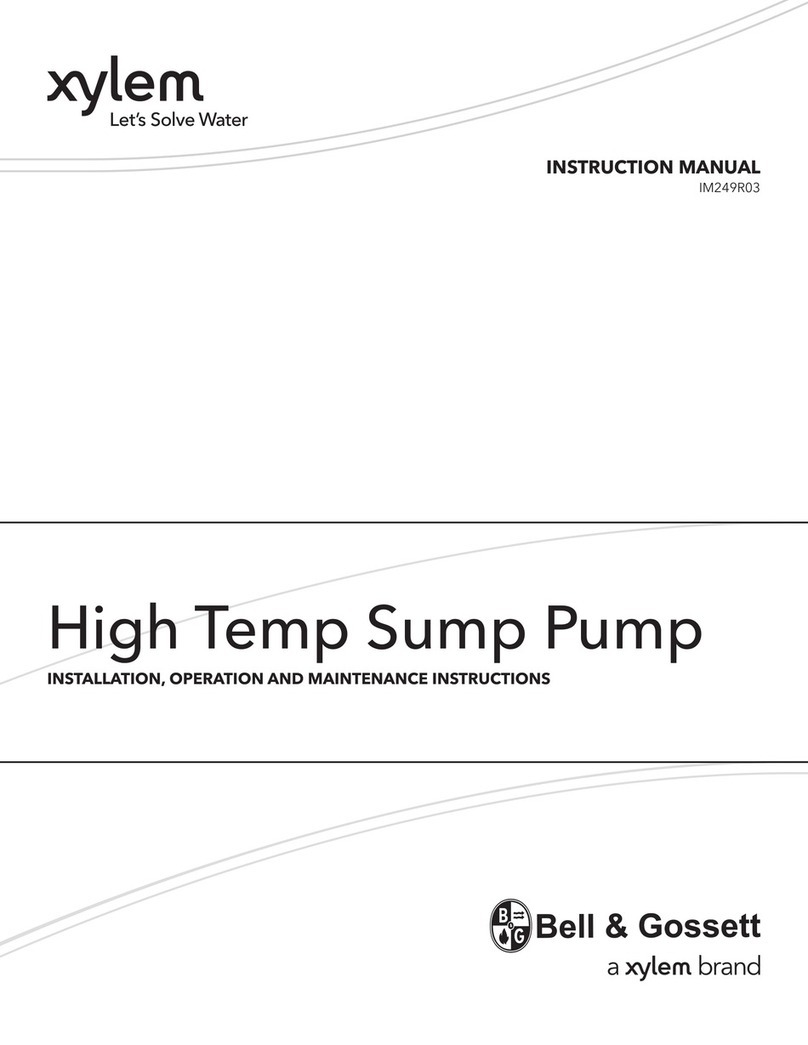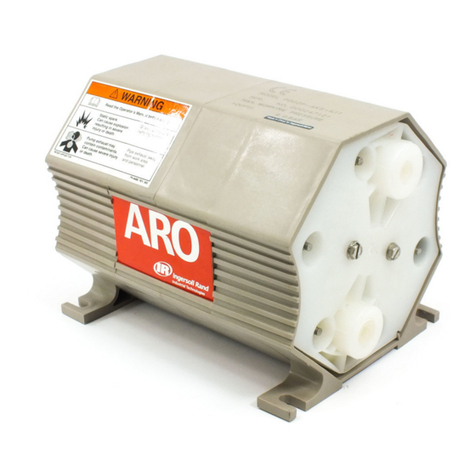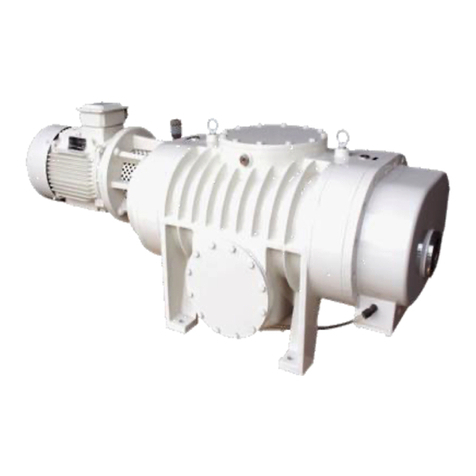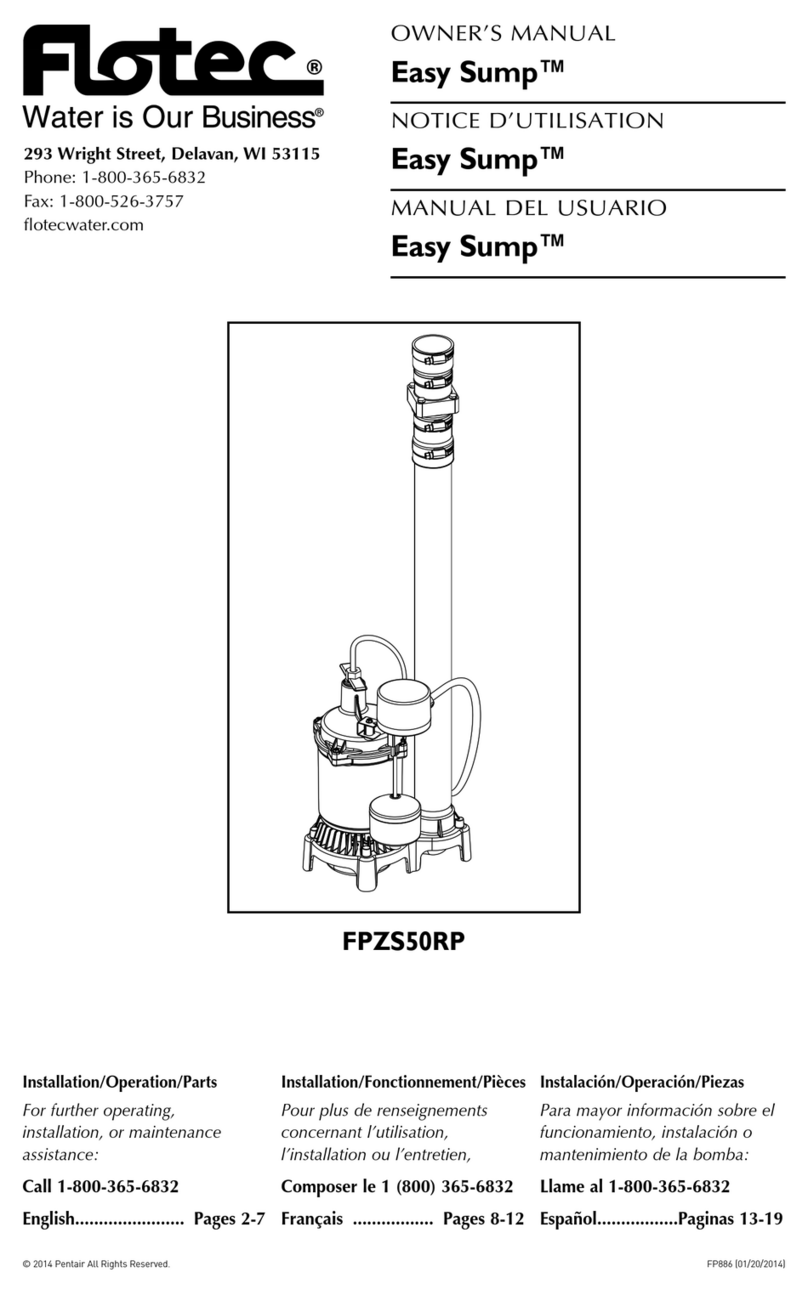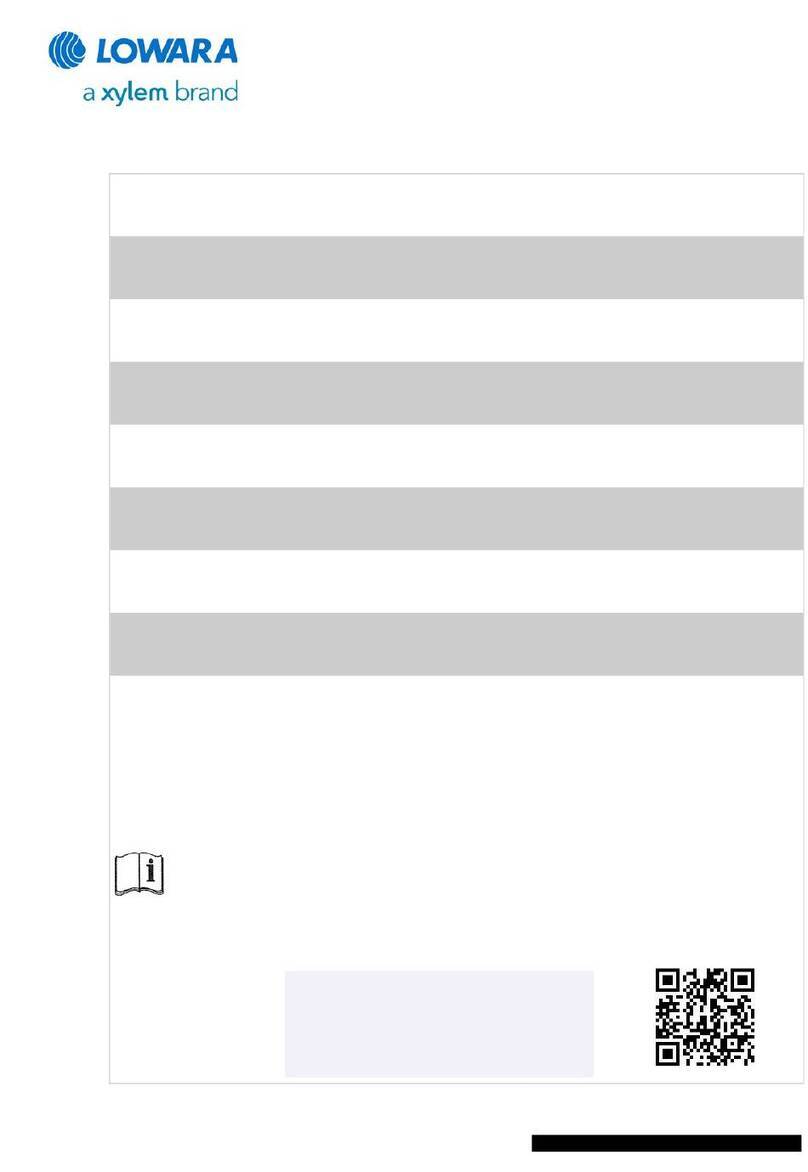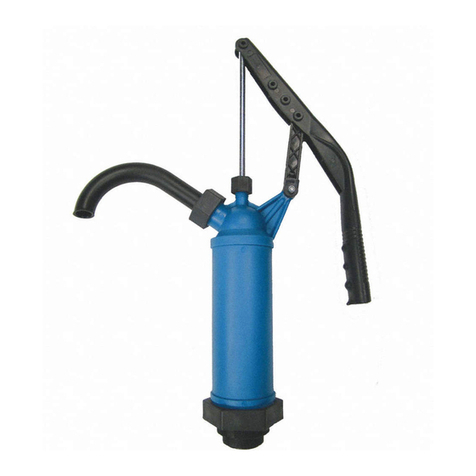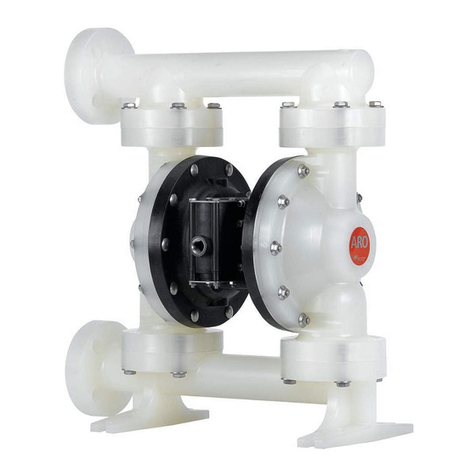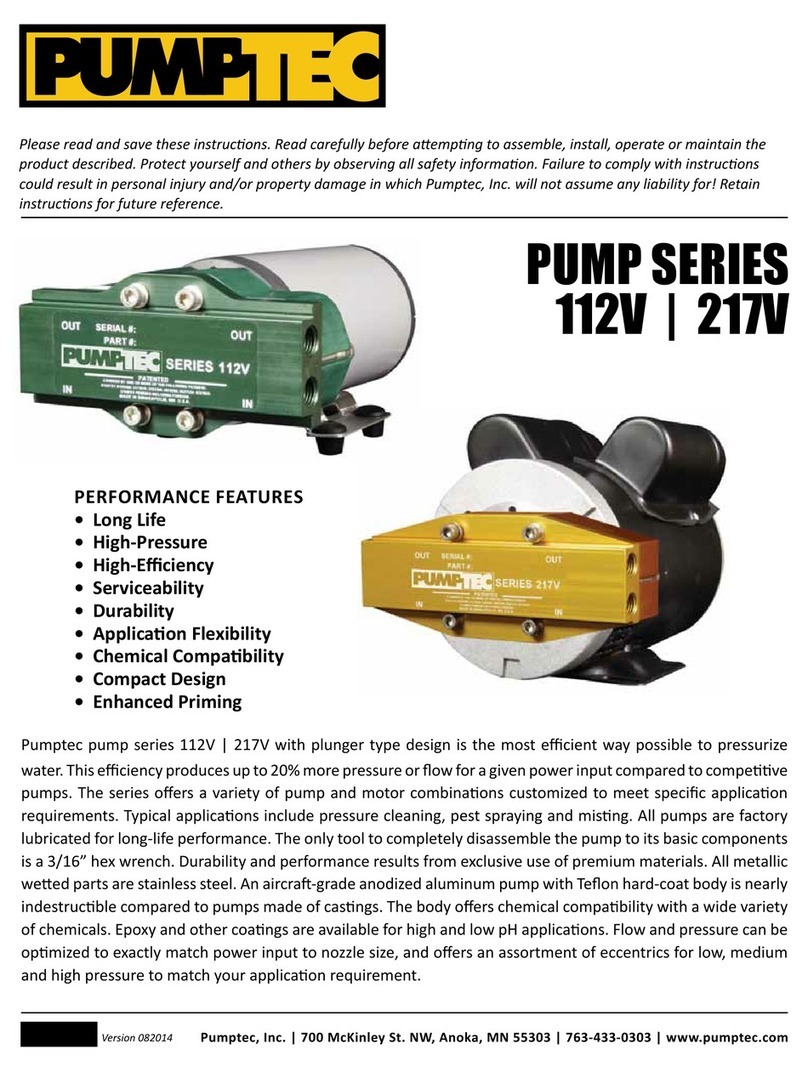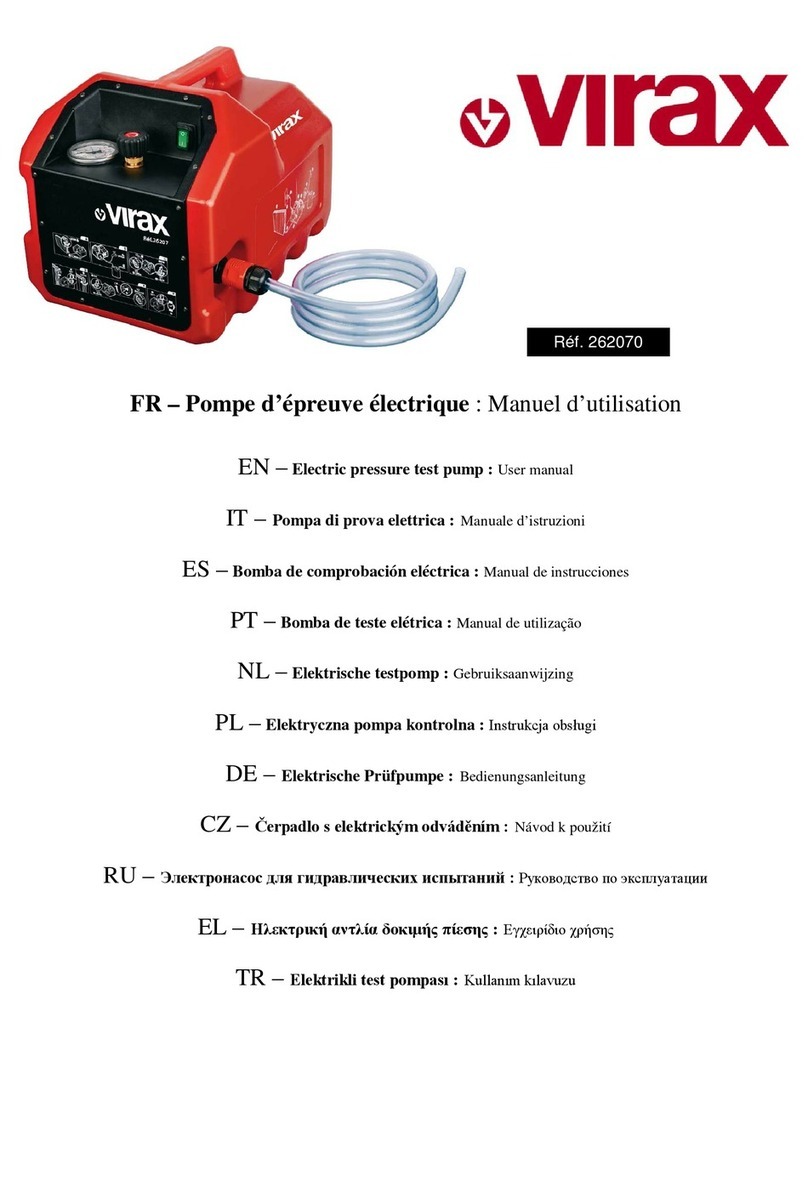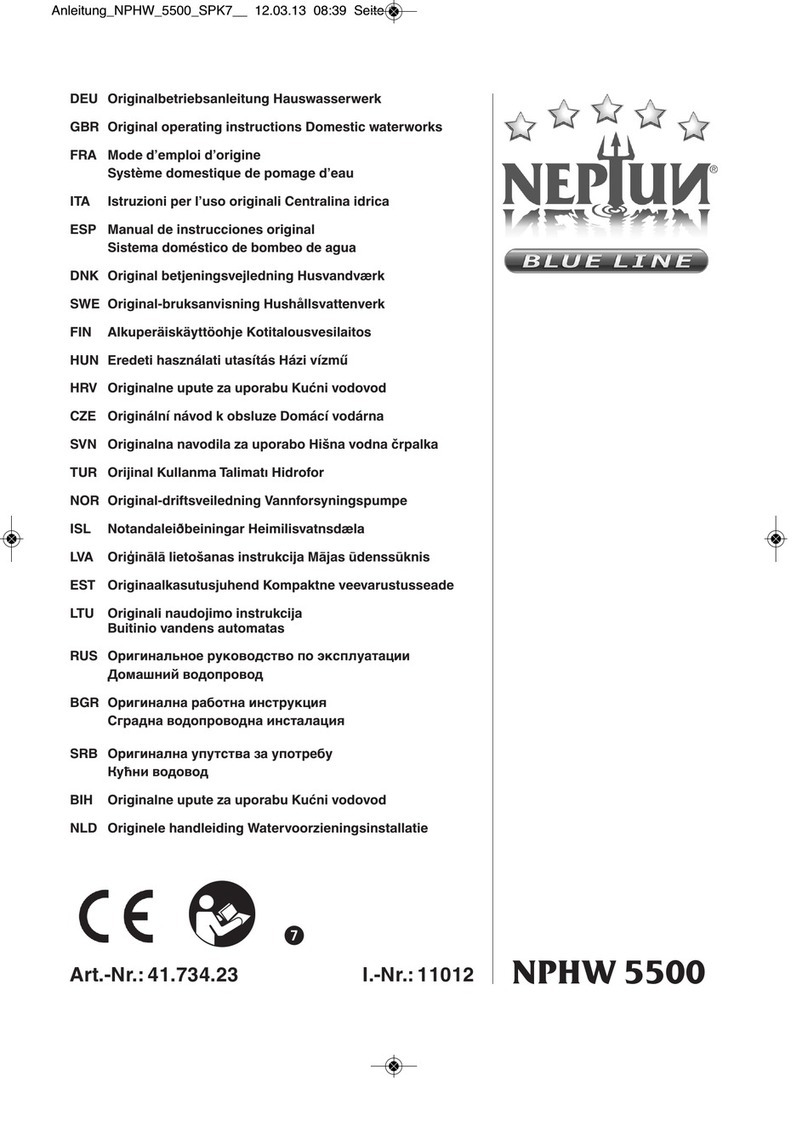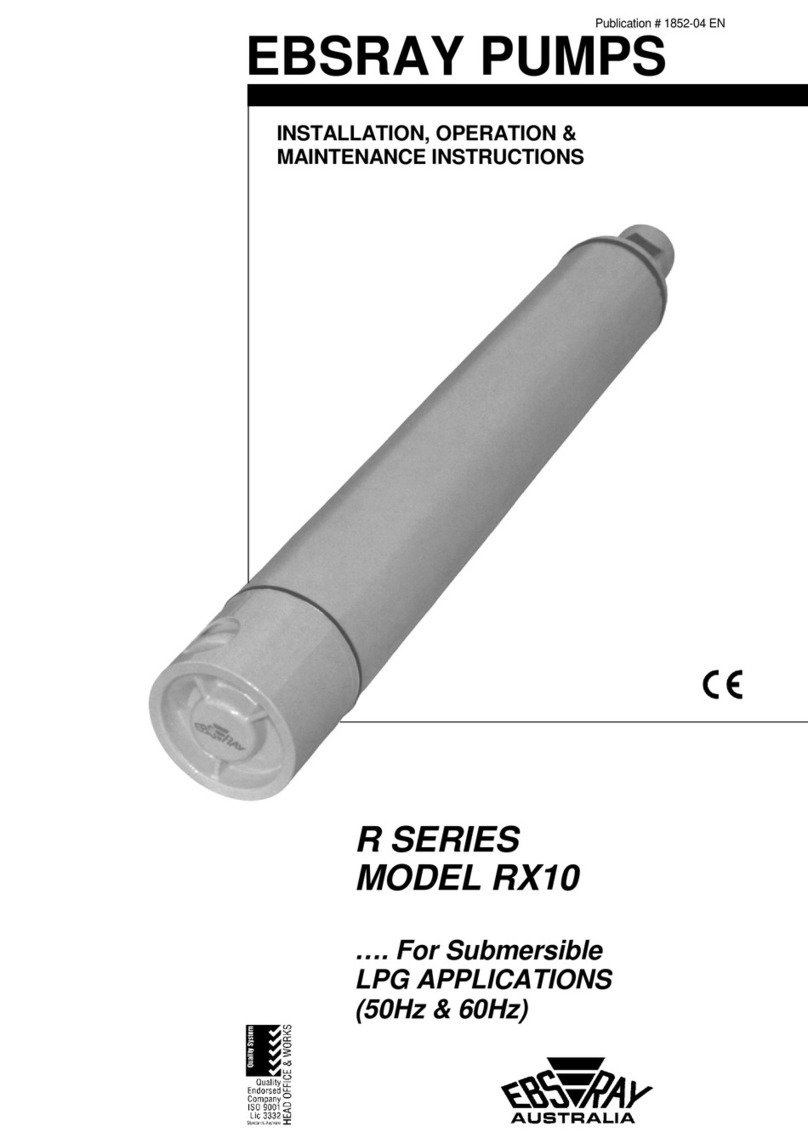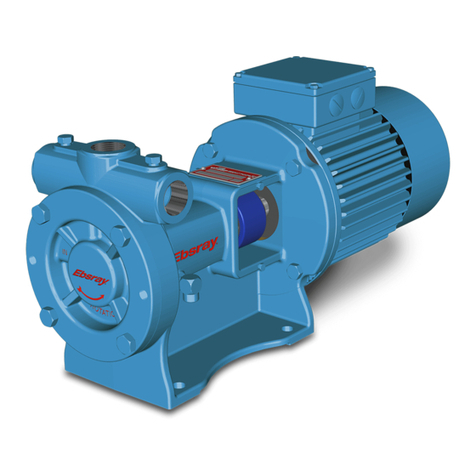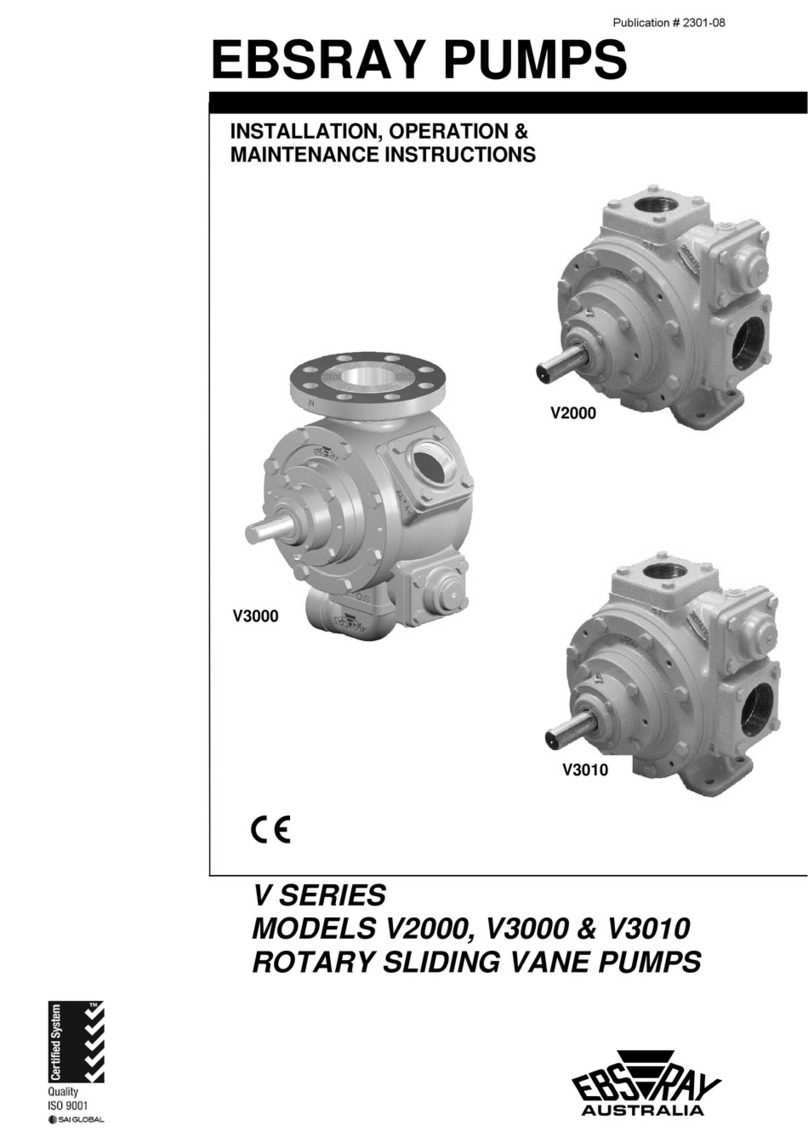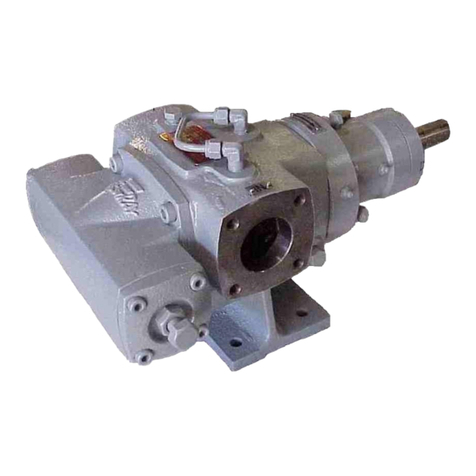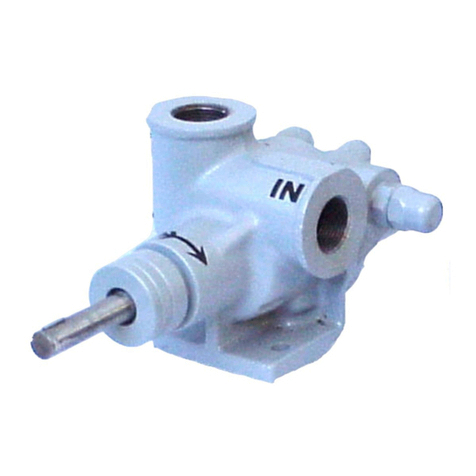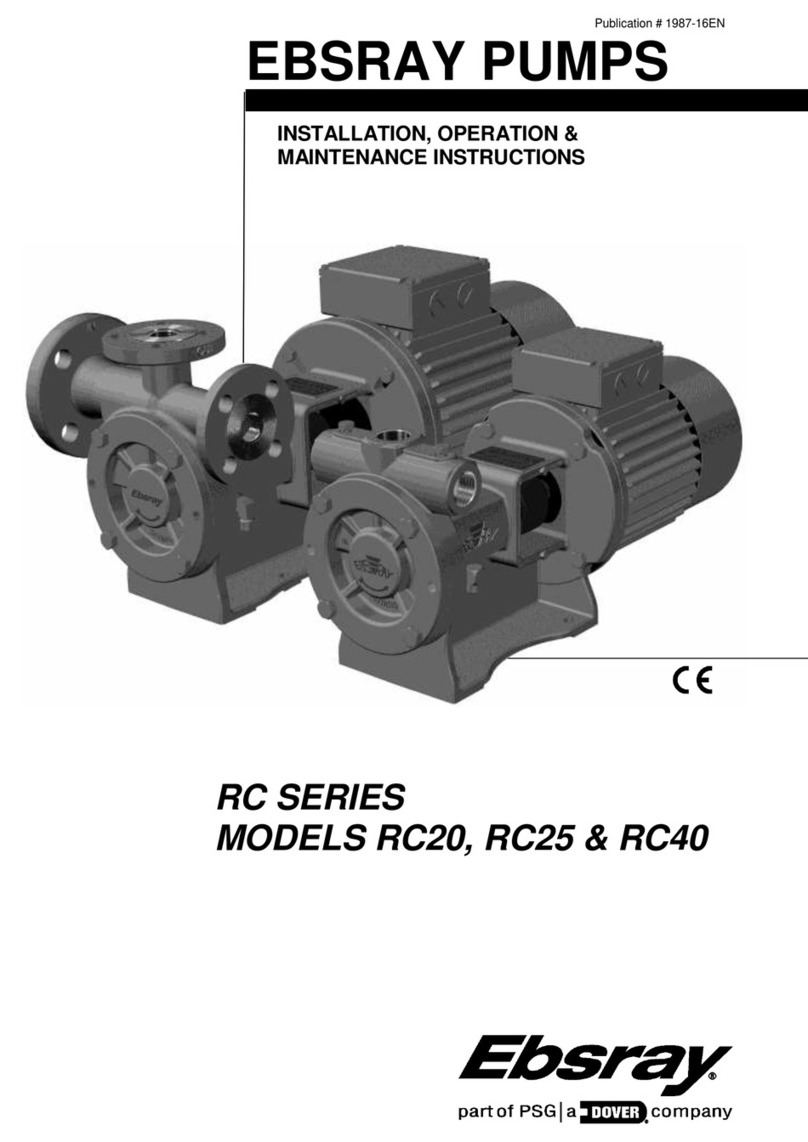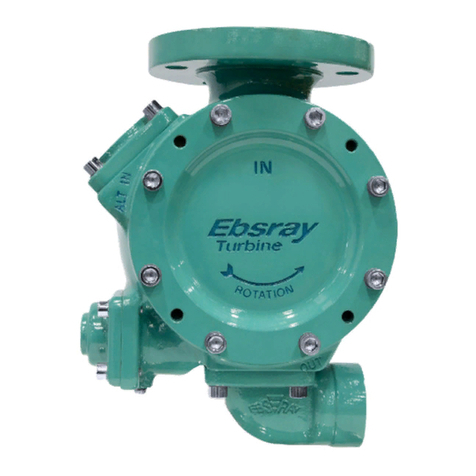
SECTION 4 – OPERATION
4.1 DESCRIPTION
The RB10 Pumpset is designed to provide trouble-
free & safe operation in potentially explosive
environments provided it is operated in accordance
with the following recommendations.
1. Pump
The Ebsray Model RB10 pump is a compact
Regenerative Turbine pump-motor unit, designed for
pumping LPG of Internationally accepted (ISO) quality
and specification.
The Pump meets the requirements of Australian,
European ATEX and other International Standards
and Codes for use in potentially explosive
atmospheres.
2. Motor
Standard RB10 pumpsets are available from Ebsray
using Direct Coupled 2,880 RPM (4kW or 5.5kW
50hz) or 3,500 RPM (5.5kW or 7.5kW 60hz) Electric
Motors. Ebsray can supply other options to suit
customer requirements. The RB10 pump can also be
driven by other means such as belt drive, diesel
engines etc. Ensure motor conformity with all
necessary Codes, Regulations, Standards, Directives
and site requirements.
3. Coupling
Non-Sparking design (e.g. “polygear” type) – sized to
suit duty. Supplied by Ebsray or customer supplied.
4.2 LUBRICATION
The Ball Bearings for RB10 pumps are grease
lubricated and 'sealed-for-life' design.
No 'in service' lubrication is required on EBSRAY's
RB10 Pumps.
For motor, refer to specific motor manufacturer's
recommendations.
4.3 PRE-STARTUP CHECKLIST
Refer to pre-start inspection checklist (Appendix B)
Do not run Pumpset dry.
Do not start Pump against
e. Severe internal damage
to the Pumpset will result, voiding Warranty.
closed Discharge Valv
4.4 STARTUP PROCEDURE
Fill in the ‘Pump Run Log’ provided in Appendix C
1 Ensure all conditions described in Pre-Startup.
2. pressure gauge. the
3. w to
4. nd statutory requirements
5. power (i.e. 'jog' motor) to verify
6
e
Checklist have been met.
Check reading on discharge
Record product vapour pressure in
commissioning section of the Pump Run Log.
Back-off Bypass Valve Adjusting Screw (scre
maximum 'out' position).
Verify all site conditions a
have been met.
Briefly activate
correct pump rotation. (Cast arrow on cover)
Start Pumpset.
If any aspect of the
pumpset or pumping
system does not function properly, immediately
turn the pump 'off' and rectify the problem befor
re-starting.
7. After startup, pump should immediately begin to
build differential pressure. If pump does not
prime immediately, switch off to determine reason
and rectify before re-starting.
8. After startup, initially ensure that liquid is flowing
through Bypass Valve. This should be detectable
by listening or feeling the Bypass Valve.
Screw 'in' the Bypass Valve Adjusting Screw until
the required system differential pressure is
achieved.
Record discharge pressure in the commissioning
section of the Pump Run Log.
9. Check that motor current is below FLA rating.
Record motor current readings in the
commissioning section of the Pump Run Log.
NOTE: During this procedure, or at any time,
motor current must not exceed FLA rating of
motor.
10. Stop pump, restart and check for consistent results.
11. Record discharge pressure and current readings in
the commissioning section of the Pump Run Log.
12. The Pumpset is now ready for normal operation.
13. After final Bypass Valve adjustment, tighten
adjusting screw locknut and seal for security.
14. The startup procedure is now complete.
15. Inspect Pumpset/pumping system frequently during
the first few hours of operation then periodically
thereafter (see Section 4.5 for frequency).
Record observations from these inspections in the
Pump Run Log.
4.5 PERIODIC INSPECTION
Periodic Inspection of the Pump, Pump System and
Ancillary Equipment is required to maintain safety,
conformity, operational functionality and reliability.
Ebsray recommends a maximum interval of three
months or 500 hours operation between routine
periodic maintenance inspections (More frequent
inspections may be necessary dependent upon
usage, site conditions, operation etc).
If any abnormal condition is discovered, cease
operation of pump immediately and take action to
rectify the problem. Record observations from these
inspections in Pump Run Log.
For safe operation, the following items should be
included in the routine periodic inspection:
a. Inspect the Pump for LPG leaks, vibration,
abnormal noises, signs of overheating,
discolouration, etc.
b. Inspect Coupling Assembly for signs of wear,
overheating, discolouration, etc.
c. Check Pump differential pressure
d. Check Motor Current.
e. Inspect motor for vibration, abnormal noises,
signs of overheating, discolouration, etc.
8
